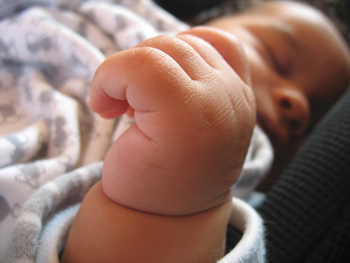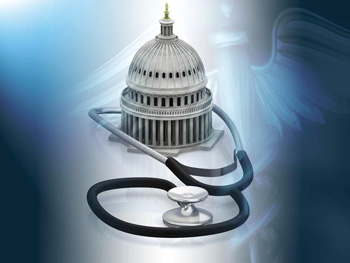Protecting 50 years of child health progress
By Marian Wright Edelman - Guest Columnist- | Last updated: Jun 10, 2015 - 10:12:13 AMWhat's your opinion on this article?
“It was a generation ago that Harry Truman said, and I quote him: ‘Millions of our citizens do not now have a full measure of opportunity to achieve and to enjoy good health. Millions do not now have protection or security against the economic effects of sickness. And the time has now arrived for action to help them attain that opportunity and to help them get that protection.’ ...The need for this action is plain; and it is so clear indeed that we marvel not simply at the passage of this bill, but what we marvel at is that it took so many years to pass it.”

President Lyndon B. Johnson said this as he signed Medicaid into law on July 30, 1965, thanking former President Harry S. Truman and the many members of Congress from both parties who laid the groundwork and worked tirelessly to make the Medicaid program and its protections reality. Not only has Medicaid been a lifesaver for tens of millions of older Americans for 50 years, it has helped Americans of all ages, including millions of children. Together with the Children’s Health Insurance Program (CHIP) it has brought the number of uninsured children to a historic low. Medicaid and CHIP provide comprehensive and affordable health coverage to more than 44 million children—57 percent of all children in America.
With the new coverage options offered by the Affordable Care Act (ACA), 93 percent of all children now have health coverage. Yet, at a time when we should be celebrating Medicaid and CHIP successes, serious threats to Medicaid, CHIP, and the ACA continue to surface in Congress.

|
The Budget Resolution also puts in motion a process to repeal the ACA, which prohibits discrimination against the 129 million children and adults with pre-existing health conditions, helps more than 5 million uninsured 18-26 year olds now covered under parental insurance plans, and extends Medicaid coverage to age 26 for some youths leaving foster care. More than 10 million near poor adults, including many parents, in the 29 states and the District of Columbia that have expanded their Medicaid rolls under the ACA will lose Medicaid coverage as a result. While children comprise 48 percent of those enrolled in Medicaid, they account for less than a quarter of Medicaid costs. Medicaid’s current structure guarantees children the health and mental health care to meet their individual needs when they need it and must be protected. Changes that result in loss of or limits on children’s health coverage would require states and local communities to absorb substantial costs.
An uninsured child costs the local community $2,100 more than a child covered by Medicaid. Medicaid’s Early and Periodic Screening, Diagnostic, and Treatment (EPSDT) benefit guarantees the full range of comprehensive primary and preventive coverage children need, preventing more serious and costly consequences later on. Almost 75 percent of children enrolled in Medicaid had a preventive well-child visit in the past year compared to 41 percent of uninsured children.

|
After 50 years of Medicaid’s protections, how can any elected leaders still not get it or get it but simply not care about the most vulnerable among us? We should let them hear from us.
Marian Wright Edelman is president of the Children’s Defense Fund whose Leave No Child Behind® mission is to ensure every child a Healthy Start, a Head Start, a Fair Start, a Safe Start and a Moral Start in life and successful passage to adulthood with the help of caring families and communities. For more information go to www.childrensdefense.org.
INSIDE STORIES AND REVIEWS
-
-
About Harriett ... and the Negro Hollywood Road Show
By Rabiah Muhammad, Guest Columnist » Full Story -
Skepticism greets Jay-Z, NFL talk of inspiring change
By Bryan 18X Crawford and Richard B. Muhammad The Final Call Newspaper @TheFinalCall » Full Story -
The painful problem of Black girls and suicide
By Charlene Muhammad -National Correspondent- » Full Story -
Exploitation of Innocence - Report: Perceptions, policies hurting Black girls
By Charlene Muhammad -National Correspondent- » Full Story -
Big Ballin: Big ideas fuel a father’s Big Baller Brand and brash business sense
By Bryan Crawford -Contributing Writer- » Full Story






 Click Here Stay Connected!
Click Here Stay Connected!








